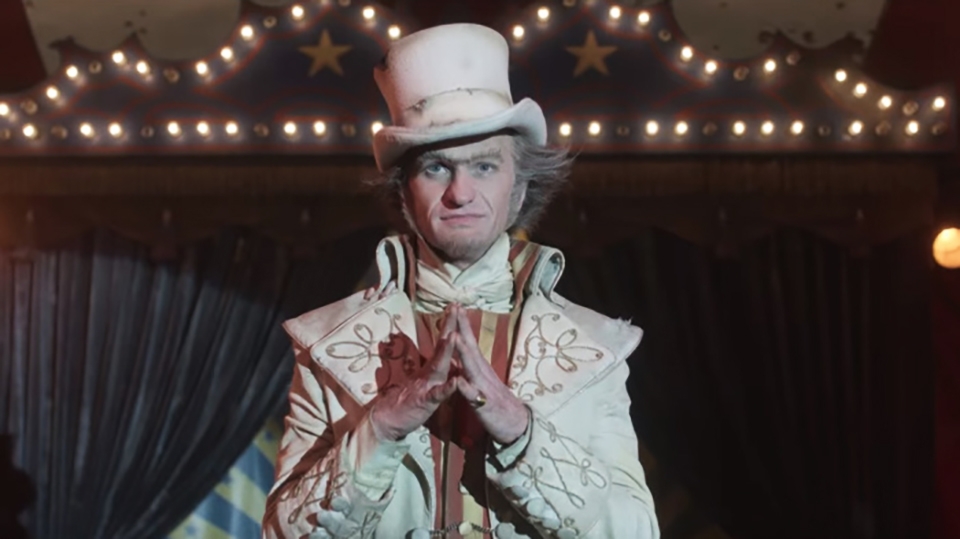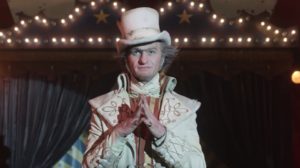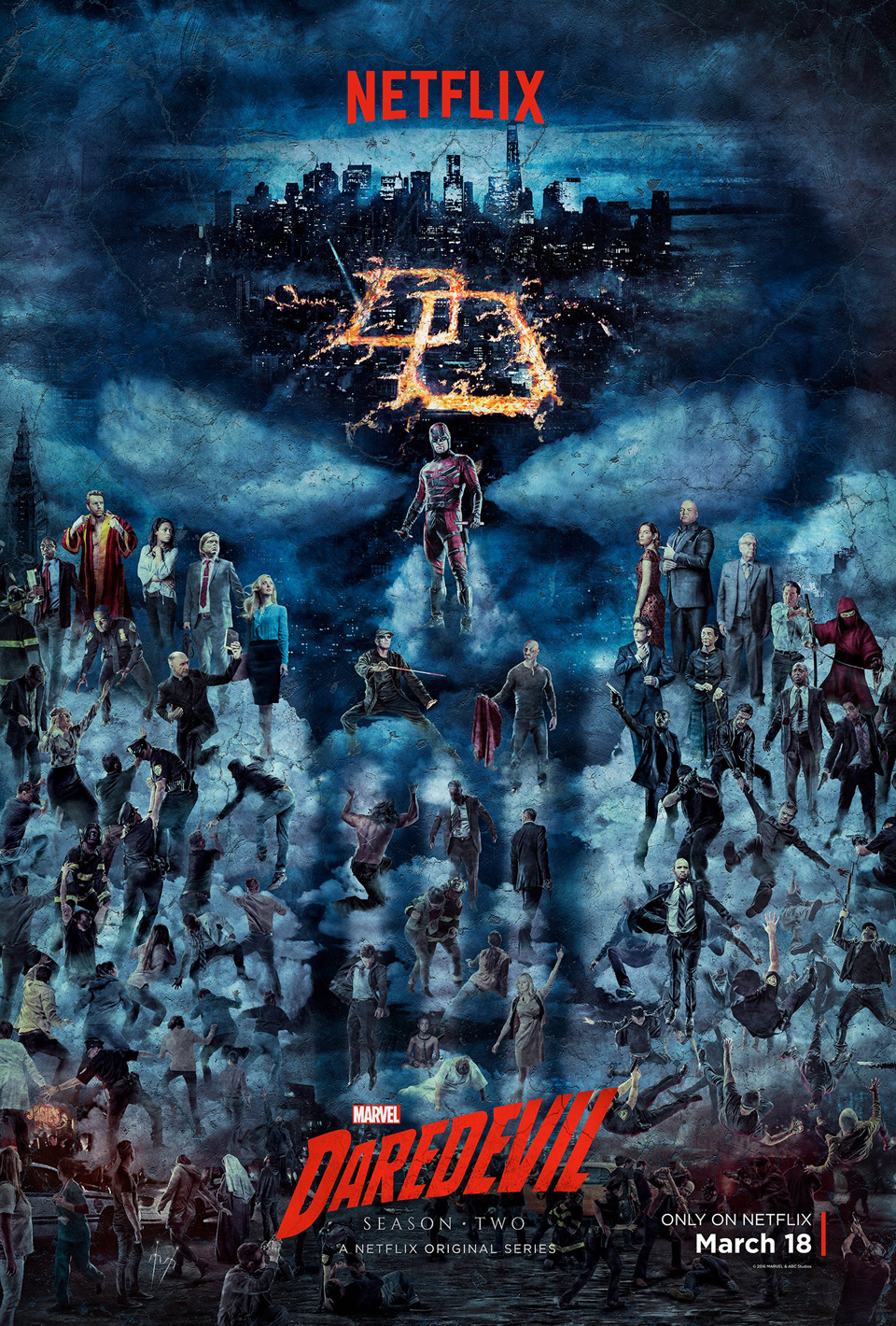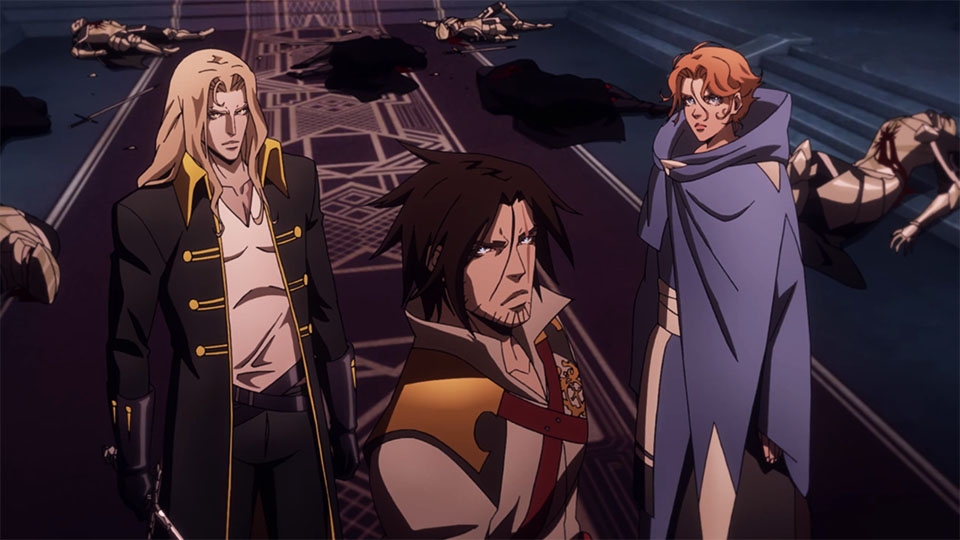

Neil Patrick Harris stars as Count Olaf, the antagonist of the series. Olaf continually tries to foil the Baudelaire siblings’ plans to evade him.
By Nicole Prieto | Staff Writer
04/05/2018
Fans rejoice: The entire second season of A Series of Unfortunate Events (ASOUE) premiered on March 30 on Netflix. We last saw the Baudelaires (Malina Weissman, Louis Hynes and Presley Smith) left in the questionable care of Prufrock Preparatory School, pondering about the mysterious spyglass now in their possession and what their futures may hold.
This season sees the Baudelaire siblings escape the dire clutches of the cemetery-like surroundings at Prufrock Prep, a fashionable penthouse on 667 Dark Avenue, a village obsessed with crows, a half-built hospital in the Hinterlands and a creepy carnival surrounded by a pack of starving lions. If you have not binge-watched all 10 episodes, consider this your final warning — because here is the good, the OK and the ugly of ASOUE Season 2.
The Good
The outstanding quality of performances from the first season are no less present and accounted for. Perhaps the most unexpected surprise is the scarily perfect depiction of Prufrock Prep’s resident child bully, Carmelita Spats. Privileged, not-parentless and harboring an ironic cake-sniffing addiction, Carmelita’s character is a notable instance where an adaptation trumps the source material. Actress Kitana Turnbull lends a lyrical and disturbing sweetness to Carmelita’s creepiness and opportunism that is difficult to imagine just from reading the novels. From her portable stage carried by her lackeys, to her glaringly bright pink dress set against the school’s drear backdrop, Turnbull’s indulgent portrayal of Carmelita epitomizes the saying, “You need to see it to believe it.”
The show’s dark humor and egregious leaning on the fourth wall is back in full force but, as in Season 1, remains respectably tasteful. Early in “The Austere Academy,” the siblings reference that they feel like they have been sitting on a waiting bench for months — to the point that Sunny (Smith) has practically grown into a toddler. The acting incompetence of Count Olaf’s (Neil Patrick Harris) troupe members is amped up, and they continue to take on paper-thin disguises and the unified role as Olaf’s comic relief. Esmé Squalor (Lucy Punch), Olaf’s newly introduced, obscenely wealthy girlfriend, drops a handful of adult references bound to go over young kids’ heads (and, to her frustration, Olaf’s).
Notably, the Henchperson of Indeterminate Gender (Matty Cardarople) remains one of the most interesting of the troupe’s vocal members. Speaking with a deadpan voice and prone to poignant observations, the henchperson is a welcome deviation from their less flattering depiction in the books. The character brings attention to issues they are concerned about (e.g., patriarchy, gender identity, etc.) in ways that function as humorous complements to scenes. When their disguised persona is introduced at Prufrock Prep, for instance, the henchperson insists that they would prefer to be known as a teacher of interdisciplinary gender studies — rather than just a health and hygiene instructor.
The OK
Given the show’s early introduction of ASOUE’s various VFD abbreviations, secret organization elements and references to characters who appear in later books, Season 2 continues to indulge in interesting detours from the source material. Olivia Caliban (Sara Rue) is the most distinct, and this character takes on the role of a harried librarian at Prufrock Prep who, very literally, fails to convince Vice Principal Nero (Roger Bart) to let her keep the school library open for more than 10 minutes. She is sympathetic to the plight of the Baudelaires and their new friends, the two surviving Quagmire triplets (Avi Lake and Dylan Kingwell).
Unfortunately, as is the case with well-meaning adults in the ASOUE universe, Olivia still meets her canonical end while disguised as Madame Lulu in the final episode, “The Carnivorous Carnival: Part Two.” But before her inevitable demise, she takes a character upgrade as the suave Jacques Snicket’s (Nathan Fillion) spy-like partner attempting, vainly, to help the Baudelaires and Quagmires throughout the season. From scaling the side of 667 Dark Avenue to fearlessly confronting Esmé and Olaf in the Village of Fowl Devotees, Olivia shows her mettle time and again.
But like characters Larry Your Waiter (Patrick Breen) and Jacquelyn (Sara Canning), Olivia’s depiction just barely avoids coming off as a superficial add-on to the Baudelaires’ story. Part of the premise of the books is the incredible incompetence of the adults in the siblings’ lives and how their own ingenuity gets them through difficulties in spite of it. Granted, the spirit of that has not changed in the series: Violet still builds ingenious inventions, Klaus is still a human encyclopedia and Sunny’s chomping prowess continues to come in handy. But being shown that the Baudelaires’ have only gotten into worse trouble partly because the “good” adults failed them somehow is a peculiar, frustrating detail — one that the show has not quite sussed out well.
The Ugly
Once again, each episode is a two-parter, and if you want to dodge as many spoilers as possible (a bit too late if you are at this point in the review), you really will need to binge-watch all 10. Perhaps unavoidably, “The Austere Academy” drags on in its first half much like the second half of “The Reptile Room.” Disguised as out-of-shape gym teacher Coach Genghis, Olaf’s incredibly sinister plan for the Baudelaires is, apparently, to get them to flunk school. Unsurprisingly, the result is a dull drag through the Baudelaires’ dreary days at Prufrock Prep as they figure out how to balance studying unbelievably boring subjects with compulsory extracurriculars.
Thankfully, the action in subsequent episodes ramps up considerably, as the siblings focus on rescuing the kidnapped Quagmires and learning more about their parents. Looking forward to Season 3, given the more adventurous plotlines of the remaining books in the series, we are unlikely to see similarly insufferable pacing issues.
The End
(No, not that The End.)
With the sinister Caligari Carnival now left burning behind them, and the answers to their questions about the possible Baudelaire fire survivor hidden away in the Mortmain Mountains, the siblings find they have little choice left: They must continue to play along as the disguised, new lackeys in Olaf’s acting troupe, who are hunting down the survivor as well. As conjoined twins Beverly and Elliot, Violet and Klaus board a caravan hitched to Olaf’s car, while Sunny, disguised as a wolf baby, sits shotgun with the troupe.
Unknown to all three, however, as they ascend the steep mountainside, Olaf reveals he figured out who they all were: With Sunny in their grasp, the troupe cuts away Violet and Klaus’s caravan from their car, and the pair reverse uncontrollably down the mountain path. In Lemony Snicket fashion, the episode cuts away as we watch the caravan’s back wheel shoot over the edge of a cliff — ending on a literal cliffhanger.
With only four more books left to cover, fans have a lot to look forward to in an inevitably heart-pounding Season 3.




